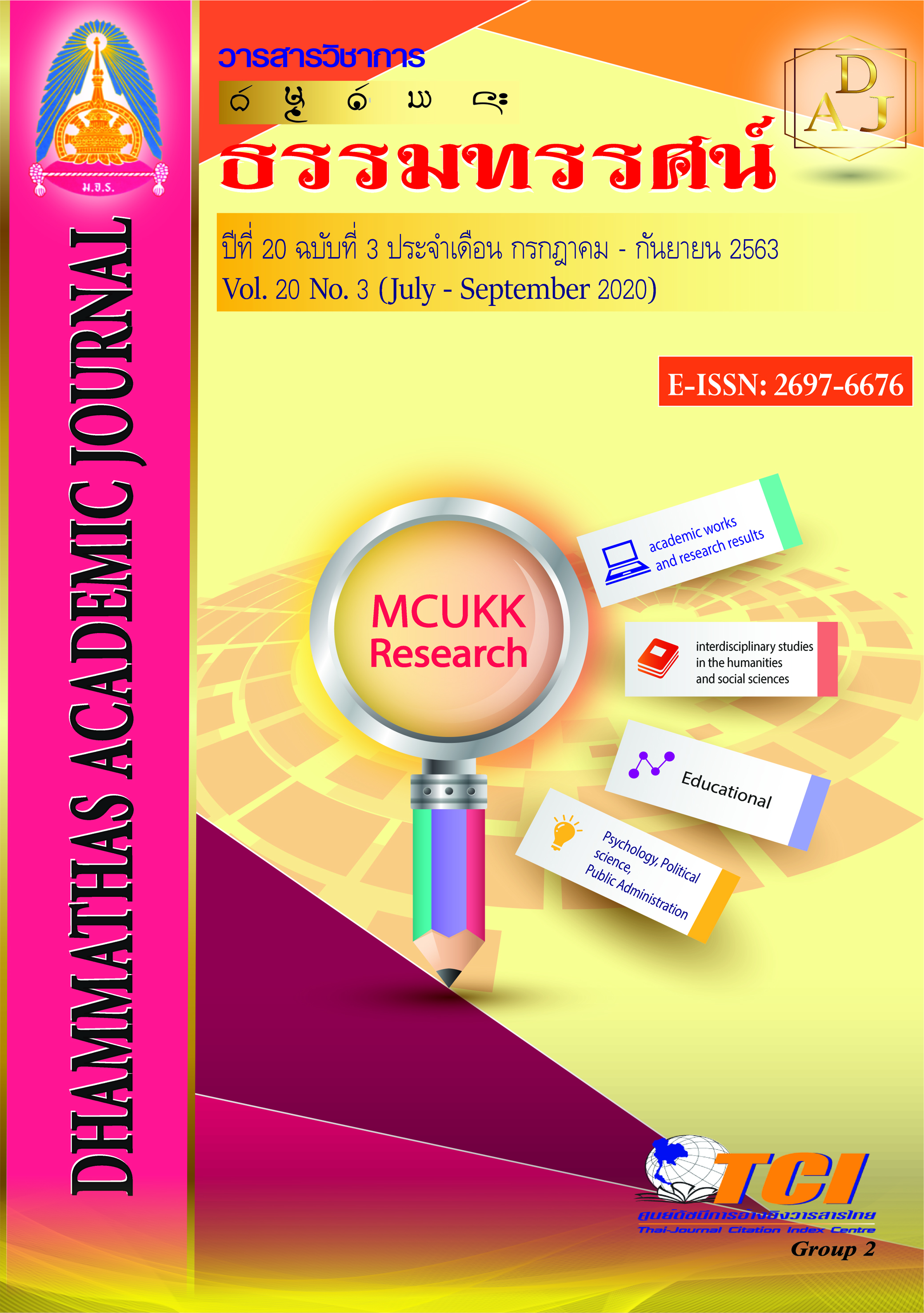The Effects of Applying Graphic Images Based on the Mandala structure for Increasing Visual Attention and Visuospatial ability for Children at Risk of ADHD -
Main Article Content
Abstract
The purpose of this research was to: 1) develop applied graphics based on the mandala structure, 2) to study the effects of using graphics based on the mandala structure for increasing the visual attention, the visuospatial ability for children at risk of ADHD, the study effects during before and after the experiment in the group that received training using applied graphics based on the mandala structure, the study effects comparing between the training groups and without training groups using applied graphics based on the mandala structure. The sample were sixty children at risk of ADHD in grade 1 to 6 from Hua Khu and Wat Sao Thong Klang School, Samut Prakan Province, randomly and equally assigned to the experimental and control groups, 30 people per group. Research instruments were the applying graphic images based on the mandala structure, Continuous performance task (Cpt), Corsi Block test. The data were analyzed using t-test.
The results were as follows:
1. The experimental group has the correctness of response to visual attention (Cpt) higher than before being trained to use graphic images using the mandala image structure at the .05 level of significance.
2. The experimental group had the correctness of response to visual attention (Cpt) higher than the control group at the .01 level of significance.
3. The experimental group has the correctness of the response to the visual ability and the relative dimension (Corsi Block) higher than before being trained to use the graphic image using the Mandala image structure at the .05 level of significance. In conclusion, drawing on the develop applying graphic images base on mandala structure could enhance the visual attention and visual actively, and the visuospatial ability for children at risk of ADHD.
Article Details
References
Assagioli, R. (2012). Psychosynthesis: A Collection of Basic Writings published by Roberto. Assagioli. USA : The Synthesis Center.
Buchalter, et al. (2013). Mandala Symbolism and Techniques. London : Jessica Kingsley Publishers.
Edmonds, W. A. & Kennedy, T. D. (2013). An applied reference guide to Research designs: Quantitative, qualitative, and mixed methods. Thousand Oaks, CA : Sage.
Harper, D. (2017). etymology dictionary. https://www.etymonline.com/word/mandala (Accessed November 2017).
Jung, C. G. (2009). Foundation of the Works of C. G. Jung. Reprinted from The Red Book by C. G. Jung. With permission of the publisher, W.W. Norton : Company, Inc.
Liu, B., et al. (2012). Feature precedence in processing multifeature visual information in the human brain: an event-related potential study. Neuroscience, 210, 145-151.
Masquelier, Y. (2004). The Mandala, a Symbol of the Psyche in the Life and Work of C. G. Jung. In Tibetan Mandala: Art and Practice The Wheel of Time, edited by S. Crossman and J. Barou, 71-76. Old Saybrook. CT : Actes Sud.
Moore, D. T. (2008). Eye Exercises to Increase Attention and Reduce Impulsivity. http://improvevisionquick.com/ (Accessed 17 December 2014).
Niyomtham, S. (2017). The effect of using SNIGO line art to increase concentration in work and self-control of ADHD children. Bangkok : Kasem Bundit University.
Papadopoulos, R. K. (2006). The handbook of jungian psychology: Theory, practice and applications. London : Psychology Press.
Shepherd, M., et al. (1986). The relationship between eye movements and spatial attention. The Quarterly Journal of Experimental Psychology A: Human Experimental Psychology, 38(3-A), 475-491.
Thawornphaibunbut, N. (2012). Reference frame for visual perception. Bangkok : Mahidol University.

